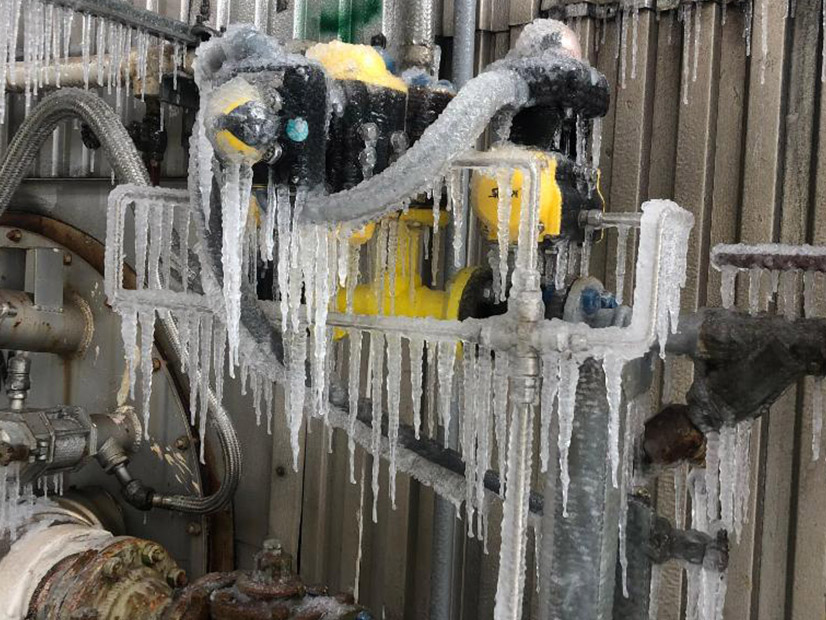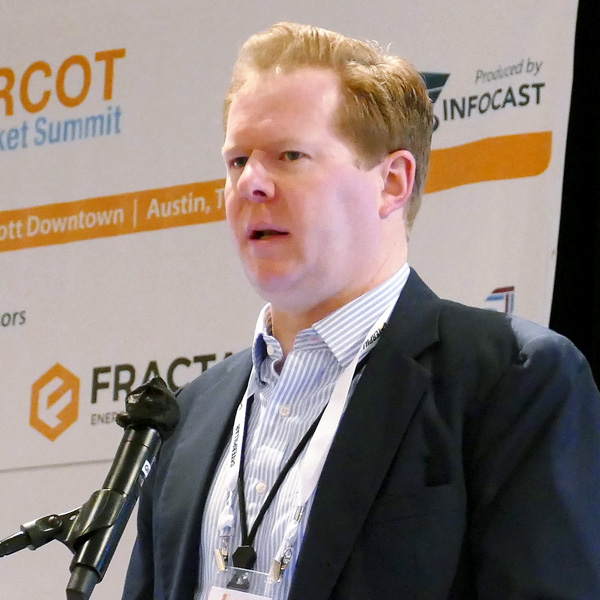
PUC Adds Summer Requirements to Weatherization Rules
Texas regulators last week adopted expanded weather preparation rules for generators and transmission utilities during both summer and winter weather events, building on winterization rules passed last November following the devastating winter storm.
The order sets specific temperature standards for 10 geographically distinct areas in the state and establishes minimum and maximum temperatures at which generation owners and transmission utilities need to prepare their facilities to operate. The standards go into effect in 2023 (53401).
 Texas PUC Chair Peter Lake | © RTO Insider LLC
Texas PUC Chair Peter Lake | © RTO Insider LLC
“The grid has to be ready for any weather condition, from extreme heat to extreme cold,” Public Utility Commission Chair Peter Lake said after Thursday’s open meeting. “These rules take that into account by setting the baseline preparation requirements for an operator at some of the most extreme weather conditions this state has experienced and requiring the operator to prepare their generation resources and transmission facilities to be able to operate in those conditions.”
Commissioner Will McAdams filed a memo before the meeting directing staff to add requirements that the industry account for wind chill in their cold-weather mitigation strategies. Power plants must weatherize their equipment to handle wind chills of 0 degrees Fahrenheit in most areas and temperatures of up to 96 F.
“I believe that given the cold weather conditions experienced in Texas during both 2011 and 2021, we should consider enhancing the staff-proposed rule by specifically accounting for wind chill based on a uniform weather zone-dependent standard,” McAdams wrote.
The expanded rule removes an exemption process adopted last year for utilities that could not meet mandatory preparation deadlines from supply chain issues or other acceptable reasons.
It also requires ERCOT to deliver a weather study that examines several weather parameters that can negatively affect the grid. The Texas grid operator must update this study at least every five years to account for variability in weather patterns.
The PUC also adopted a weather emergency preparedness report for the Texas Legislature that evaluated emergency operations plans developed by electric utilities, generators, municipally owned utilities, electric cooperatives and retail electric providers (53385).
The report’s authors reviewed 691 plans to identify best practices and assess the entities’ ability to manage emergencies from severe weather conditions and projected peak season conditions. They found 91% of the entities filed a complete report in a timely manner, the highest score among the seven criteria studied. Other criteria included emergency contacts (80%) and the plan’s content (69%).
PUC Appeals to SCOTUS
Following a closed session, the commission authorized its legal staff to appeal the 5th U.S. Circuit Court of Appeals’ recent decision siding with NextEra Energy’s challenge of Texas’ right-of-first-refusal legislation.
The 5th Circuit in August ruled the 2019 legislation (Senate Bill 1938) violates the U.S. Constitution’s dormant Commerce Clause. It remanded the case back to the U.S. District Court for Western Texas. (See 5th Circuit Finds in Favor of NextEra’s ROFR Appeal.)
The Texas Office of the Attorney General will represent the PUC in the appeal. As of Friday, a petition for review had yet to be filed with the Supreme Court, a commission spokesman said.
SCT Proceeding Closed
The PUC closed its oversight proceeding on the Southern Cross Transmission Project, saying it agreed with ERCOT’s solutions to its 14 directives to determine whether the proposed DC tie can safely interconnect with the Texas grid (46304).
The ERCOT Board of Directors in August endorsed the last three regulatory directives. The project has been under regulatory review since 2015. (See ERCOT Board Gives Southern Cross Project a Boost.)
“Is it fair to say that we, the regulators, have completed everything we can at this point in the process and are handing the baton to the private sector, to run with it as far as it can?” Lake asked Commissioner Jimmy Glotfelty, who responded in the affirmative.
“And that’s an important part of how Texas approaches regulation. We want to take care of business that needs to be done for reliability and for our consumers, and then hand it to the private market,” Lake said.
The Southern Cross project would build 400 miles of double-circuit 345-kV line that would be capable of carrying 2 GW of energy into the SERC Reliability region. SCT has FERC approval and a waiver from its jurisdiction, keeping ERCOT free of federal overview and maintaining its status as an island unto itself.
The PUC opened a new proceeding (54166) requiring regular updates from ERCOT on the project’s development. Coordination and SCT’s market participant agreements must be executed before the Texas side of the project can be energized.
Glotfelty Joins WEIM Regulatory Body
The commission accepted an invitation to join the CAISO Western Energy Imbalance Market’s (WEIM) Body of State Regulators, assigning Glotfelty to represent the state’s interests.
The group provides a forum for state regulators to learn about the WEIM and related CAISO developments “that may be relevant to their jurisdictional responsibilities.” It can express a common position on market issues in the ISO stakeholder process or to the WEIM’s Governing Body.
El Paso Electric is a WEIM member.
The now 12-member body is chaired by Thad LeVar, who also chairs Utah’s Public Service Commission.



